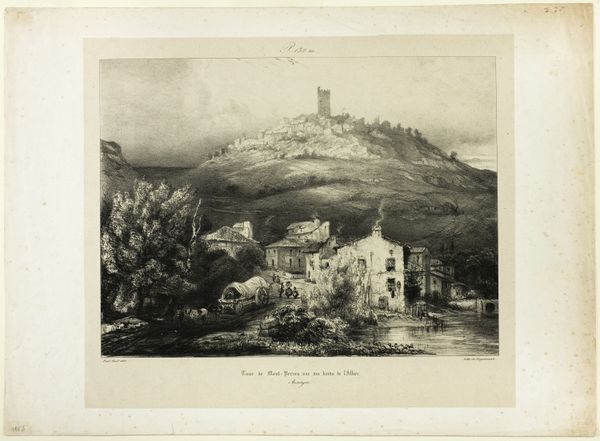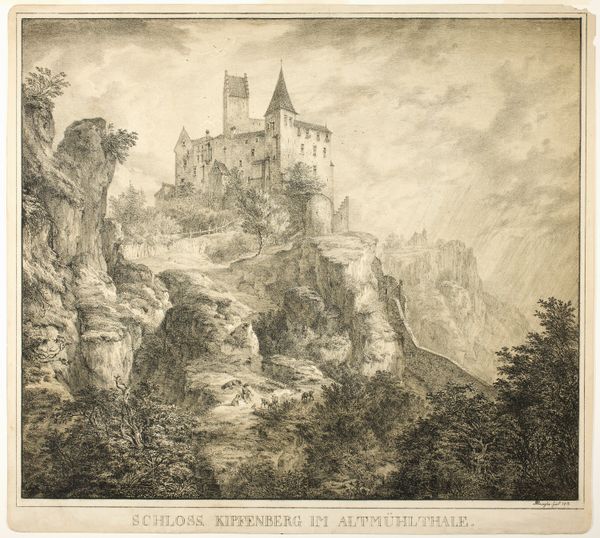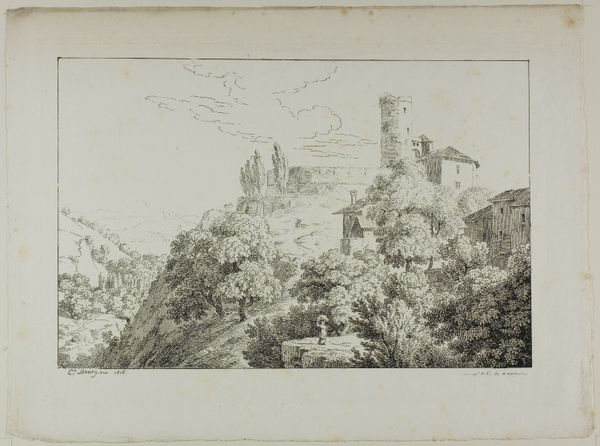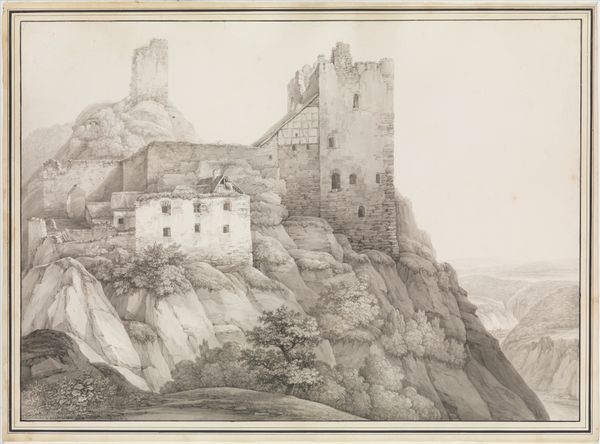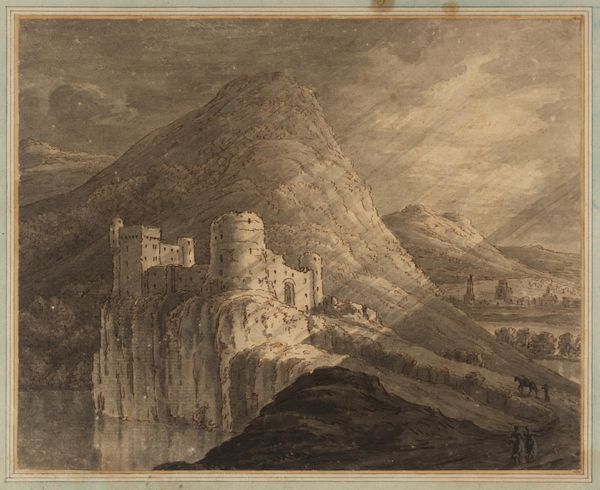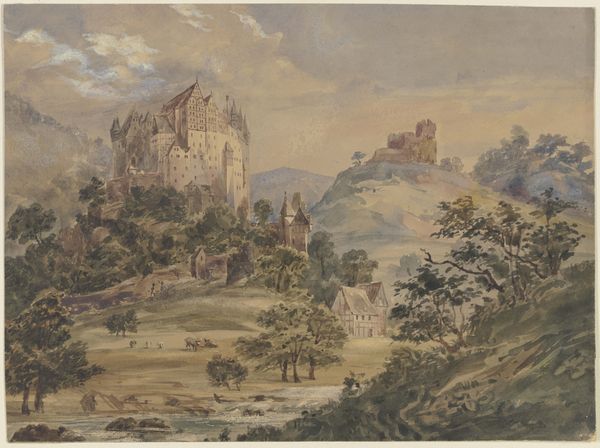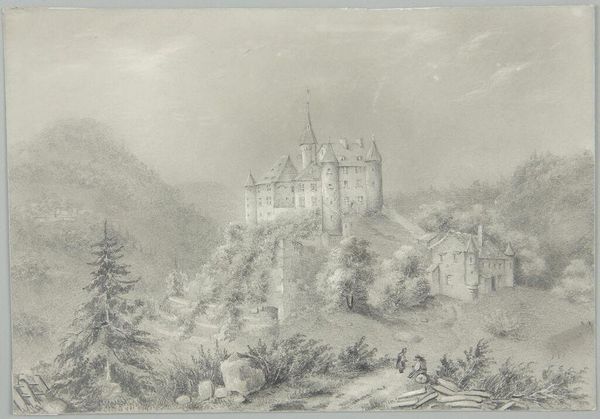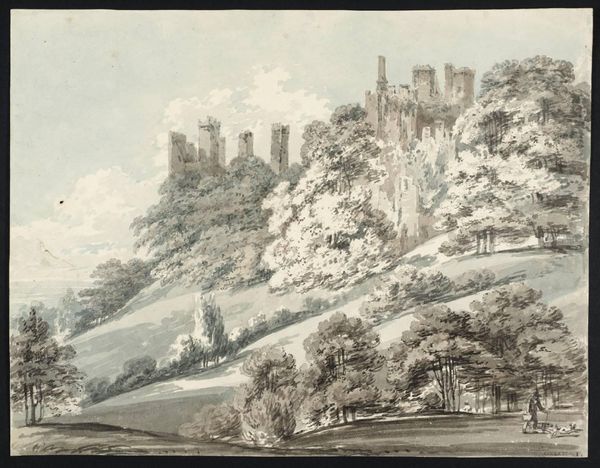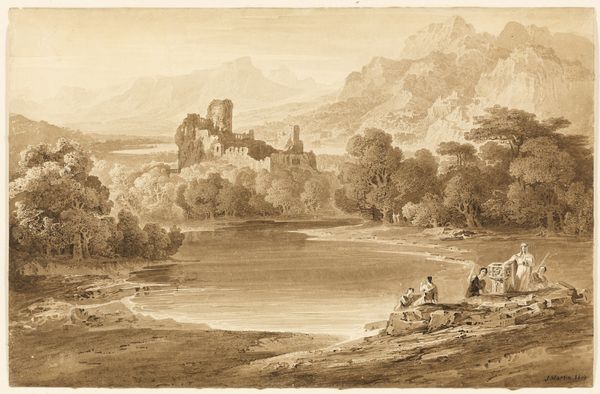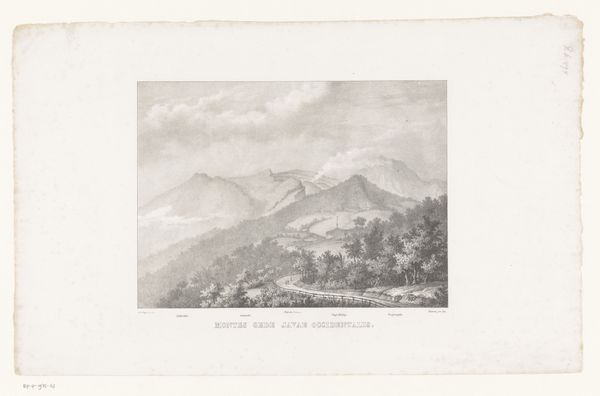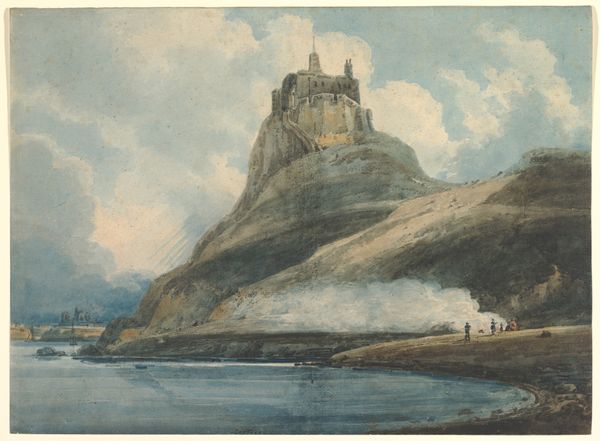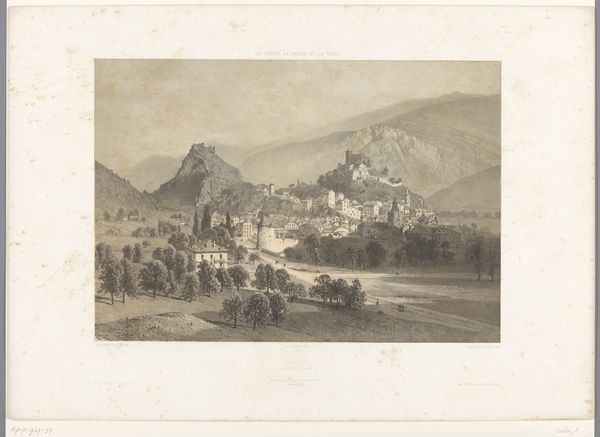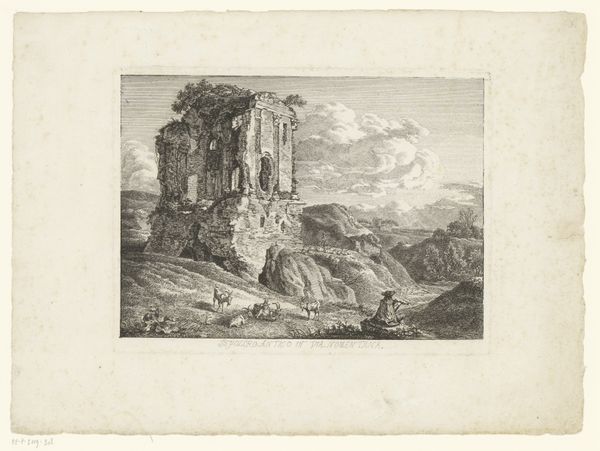
drawing, plein-air
#
drawing
#
plein-air
#
landscape
#
romanticism
Dimensions: 10 x 16 1/4 in. (25.4 x 41.3 cm) (sheet)
Copyright: Public Domain
Adrian Zingg made this drawing of Tollenstein using pen and brown ink with gray wash, likely in the late 18th or early 19th century. The process is delicate. With thin lines and diluted washes, Zingg captures the interplay of light and shadow on the landscape. It is as if he is inviting us to look not just *at* the scene, but *into* it. The cultural significance here lies in the picturesque aesthetic, popular at the time. Artists like Zingg weren't just recording landscapes; they were curating them, selecting views that evoked feelings of awe and nostalgia. But it’s also worth considering the labor involved. Each stroke of the pen, each carefully applied wash, represents hours of skilled work. In a way, the drawing is not just a depiction of a place, but an index of human effort. So, when we look at "View of Tollenstein," let's appreciate it for its material qualities, the artist's skilled hand, and the cultural values it embodies. It's a reminder that art is always rooted in the world of making and ideas.
Comments
minneapolisinstituteofart almost 2 years ago
⋮
Adrian Zingg was a master of the monochrome landscape executed in watered-down inks. The extraordinarily nuanced gradations of tone he could achieve are clear in the play of light and shadow. This drawing, probably a preliminary study for a larger work, depicts the ruins of Castle Tollenstein in Bohemia (today in the Czech Republic). Yet it is more than a recognizable topographical view. Looking at the ruined castle, the monumental bluff, and the vast dark forest in the foreground, it seems as if Zingg’s subject is the grandeur of nature itself.
Join the conversation
Join millions of artists and users on Artera today and experience the ultimate creative platform.
